Violet's Violet Needles
A replication of Somerville's study of violet light's magnetization properties by Violet Henriques, Ethan Ludwin-Peery, Fae, and Asha Lee
Abstract
Can violet light magnetize stainless steel needles? What about ultraviolet light? Can heat magnetize stainless steel needles? What about hitting the needles with a hammer?
We attempted to replicate Mary Somerville’s 1826 experiments where she magnetized needles using violet light, but unlike Mrs. Somerville, we did not observe any magnetizing effect. We also attempted to use heat to magnetize the needles (which had no effect), and we attempted to magnetize the needles using an ultraviolet light emitting box (which also had no effect). Finally, we oriented the needles north/south and hit them with a hammer (which magnetized them).
Also six (or more?) of our needles became magnetic and we don’t know why.
Part 0 - Science House
This replication was done as a part of Science House 2024, a seven-week project where me and my friend Ruth got a stipend to live in Cambridge and do whatever science or research we wanted to with guidance from our buddies Ethan and Adam. We hope that one day science houses will replace doctoral programs because doctoral programs are boring and science houses are fun.
To read more about the theory of science house you can check out this blog post by Adam Mastroianni (our ringleader) and to read more of our science you can check out the rest of my blog, Ruth’s blog, and Ethan’s blog!
Part 1 - Inception
Before Science House began Ethan, who was my professor at the time, and I were having a conversation. I expressed how done with psychology research I was after running 5 studies in 2 years. Ethan reminded me that “we don’t have to do only psychology research at Science House” and spun me a yarn about how “the Italians say you can magnetize steel needles with violet light.”
I promptly forgot about this conversation until halfway through Science House when I was feeling burnt out at the prospect of yet more psychology research. Ethan once again reminded me about the Italians and my eyes lit up! It was science time :)
Ethan handed over his google document which contained: a primary source, a wikipedia page, and a blog post, and I got to work on the literature review.
Part 2 - Roger and the Dead Italians
In 1812, Domenico Morichini claimed he could use violet light to magnetize metal rods.
Treccani, an Italian Language Biographical Dictionary, claims that these metal rods were steel, English Wikipedia claims they were iron. Italian Wikipedia doesn’t mention them at all, preferring to speak about the praise Morichini received in his role as papal doctor.
Treccani and English Wikipedia agree that Morichini used prisms to split sunlight into various wavelengths of light. He then shone only violet light on his metal rods and magnetized them.
Fig 1.
Treccani states that while the results of Morichini’s experiments were controversial, they were confirmed by some scientists while others, “espresso perplessità” (expressed perplexity) about the direct role of light in magnetization.
We could not find a surviving primary source on Morichinni’s experiment, however we did find replications by Peter Riess and Ludwig Moser in 1829 who did not find any magnetization effect, and Mary Somerville in 1826 who reported that she was able to recreate Morichini’s findings in her back garden.
Treccani mentioned the names of Humphry Davy, George Cuvier, Andreas Baumgartner, Alessandro Volta, and Pietro Configliachi. And Somerville claimed that “[Morichini]’s experiments were repeated by Professor Configliachi at Pavia, and also by Mons. Berard, at Montpellier, without success.” However, we were not able to find any of these primary sources.
Somerville’s account was published in a letter to the Royal Society, titled On the Magnetizing Power of the More Refrangible Solar Rays, as published in Philosophical Transactions of the Royal Society. “The unusual clearness of the weather last summer,” she wrote, “induced me to try what could be accomplished in this country… The sun was bright at the time, and in less than two hours I had the gratification to find that the end of the needle which had been exposed to the violet rays attracted the south pole of the magnetic needle, and repelled the north pole.”
We too were experiencing unusually clear weather so decided to put this 200 year old mystery to rest once and for all by replicating it for ourselves!
Skimming through more modern sources Ethan found a blog called Skulls in the Stars which posted about this experiment in 2009. There was a vibrant discussion in the comment section about whether or not this experiment does indeed replicate. Some discussion of whether or not you can magnetize needles by orienting them north/south and hitting them with a hammer. And one commenter, Roger, who claimed that he received a UV sanitizer which he and his wife used to sanitize, and accidentally magnetize, needles and other metal objects.
Roger’s experiments raise some questions about what wavelengths of light can magnetize metals. Somerville’s experiments claim that violet light magnetized her needles and so did indigo and blue light but they were less effective. So, we may find that ultraviolet light is the most effective at magnetizing needles.
Given that William Herschel and Johann Ritter had just discovered the existence of light beyond the visible light spectrum in 1800 (Herschel observed light beyond red which he called “heat rays”) and 1801 (Ritter observed light beyond violet which he called “de-oxidizing rays” or “chemical rays” depending on your source) it is possible that Morichini and Somerville were either unaware of the concept of ultraviolet light or that they were using the term violet light to refer to both violet light and ultraviolet light.
Our experiments seek to replicate Somerville’s 1826 replication of Morichini’s experiments and Roger and his wife’s accidental conceptual replication of the same experiment.
Part 3 - Methods!
Somerville's Methods
Somerville conducted many experiments on needle magnetization from July to September1 where she tested conditions including:
Exposure time
Exposure methods:
Cobalt blue glass
Light from prisms
Needles wrapped in cloth
Heat of elements
Using clock springs vs. needles
Different light colors:
Violet
Indigo
Blue
Green
Red
White
What part of the needle was exposed to light.
We only seek to replicate her initial experiments which involved affixing a prism slit in a window which shone violet light onto one end of a needle, and her later experiments using cobalt blue glass (glass treated with cobalt to make it blue).
Studies 1A & 1B
We tested all our pins and needles (which were made of a stainless steel and nickel alloy) for magnetism using a modified version of Somerville’s method of touching a needle to a magnetic compass. Somerville touched the needle to both poles, we touched the needle to the 40° mark, 140° mark, 220° mark, and the 320° mark.
Somerville’s needle test locations (red S) and our needle test locations (blue U).
In both our test and Somerville’s test, a needle is magnetic if it is able to move the compass needle off of true north. If it can’t, the needle isn’t magnetic. We found that some of our needles were quite magnetic—able to move the compass needle 40 or more degrees–, most were somewhat magnetic—able to move the compass needle 10-40 degrees–, and some were quite free from magnetism—not able to move the compass needle more than 10 degrees.
Violet testing the needles for magnetism.
For Study 1A, we used a K9 optical glass prism and set it in place to cast a rainbow on the wall. Then we took a sewing needle largely free of magnetism and taped it to a manila envelope, covered the end of the needle with a Scooby-Doo post-it note, and taped the whole assembly to the whiteboard:
Study 1A. A note about the images: in general the light is captured quite well by this cell phone camera, perhaps a bit brighter than life, but the violet light looks dimmer here, compared to the other colors, than it did in real life.
We started this study on Tuesday July 2nd at 10:10 AM, and continued for two hours, manually moving the manilla envelope across the wall to keep the needle in the band of violet light.
Study 1B began at 10:20 AM the same morning. We set up another K9 glass prism in a different room, and taped four pins to a piece of yellow paper, covered one end of the pins with more Scooby-Doo post-its, and again taped this setup to the wall.
Study 1B.
In both cases, the light moved across the wall very quickly. We frequently had to move the targets to keep them in the violet light. The light also got progressively dimmer over time.
We chose these methods to most closely replicate Somerville’s original methods:
Inside
June
10 AM
However, by about 11:00 AM the light coming through our windows was too faint to cast any noticeable rainbow on the wall, so we ended these studies earlier than planned.
Neither of these needles seemed to be magnetized as a result of their exposure to the violet light. The needle used in Study 1A did not show more magnetism than a control needle.
The pins used in Study 1B also showed very little or no change in magnetism.
Studies 2A, 2B, and 2C
By now the rays of the sun were descending nearly directly from the heavens, and therefore not coming through any windows in a helpful way. So we went outside to better capture this light.
We put a bunch of pins and needles in various setups:
Side projecting box - 2A
The first set were pins with blue and yellow heads set in a box to keep them out of direct sunlight, with a prism oriented to cast a rainbow in the box and the pins placed in the violet light of this rainbow. After two hours exposed to the violet light, the two pins showed no apparent increase in magnetism.Top projecting box - 2B
The second set were pins with red and green heads set in a box to keep them out of direct sunlight. A prism was placed in a slit at the top of the box such that it shone violet light onto the pins. After two hours exposed to the violet light, the two pins showed no apparent increase in magnetism.Projected through the table - 2C
Similarly to the top projecting box a needle was taped to the top of a box and left in the shade of a picnic table. A prism was then set up in the slats of the picnic table so as to shine violet light onto the needle. After two hours exposed to the violet light, the needle showed no apparent increase in magnetism.
Studies 2A, 2B, and 2C, and some of the experimenters
Studies 3A, and 3B
After the apparent inability of our studies to replicate Somerville’s effect we stumbled across this line from her paper: “The needle was placed in a vertical plane, nearly perpendicular to the magnetic meridian, and inclined to the horizon.” Ethan expressed perplexity about the meaning of this line, but Violet confirmed that it meant “the needles needed to be oriented north/south during the experiment.”
Violet then cited commenters on the Skulls in the Stars blog who seemed to agree that you can magnetize a screw or a screwdriver by orienting it north/south and hitting it with a hammer. This implies that the orientation of a needle affects its ability to be magnetized (which is potentially true when exposed to violet light). So she set up another series of experiments.
Six days later on July 8th at around midday Violet replicated experiments 2B (top projecting box) and 2C (projected through table). The only variable she changed was ensuring that all pins were oriented north/south. Every other variable remained as constant as possible, the sky was similarly clear, the temperature similarly high, the time of the experiment similarly midday, and there was even the same group of students in the courtyard eating lunch and watching Violet experiment (they still did not say hello). Despite the rigorous recreation of the original conditions, no pins had any observable increase in magnetism.
Studies 3A and 3B
Because of how our prism box worked (and because of the position of the sun) we could either orient our needles north/south, or we could keep them in the same wavelength of light. We would like to run an experiment where we can orient our needles north/south and keep them only in violet light, but as of now we have not done such an experiment.
Study 3.5 (The Lost Experiment)
Both Ethan and Violet are convinced that Violet went outside to test needles a third time. However, neither of them have any record of such events (no photos, no notes, nothing). We have no idea how many needles were tested or what experimental conditions they were tested under, but we can assume that they were not successfully magnetized because if they were Violet would’ve definitely written that down or at least emailed someone enthusiastically about it.
Our Tragic Lack of Cobalt Blue Glass
In spite of our best efforts to wander into antique shops and ask “you got any blue glass?” we procured no such items. As such we did not conduct experiments on cobalt blue glass.
However, all hope is not lost! When I invited my friend Fae over to do some science with us they said “you know I might have some blue glass and sewing needles at my house” so I set them up with an experimental design and waited for them to have clear enough weather to run an experiment.
Study 4 - Fae’s Study!
Fae’s methods were as follows:
Find two needles of comparable magnetism.
Place one of the needles outside oriented north under blue glass for one sunny day.
Bring the needle inside and test it for magnetism
Leave both needles inside next to each other oriented north for at least one week, then test them both for magnetism.
Neither of Fae’s needles tested positive for magnetism at any point.
Roger's Methods
Skulls in the Stars commenter Roger allegedly magnetized needles (and other metallic items) using his UV light sanitizer. To attempt to replicate his work, we found the same model of UV sanitizer (Phonesoap Model 500-1) on EBay and tested it for ourselves.
One thing we didn’t realize about the sanitizer is that it turns off every 10 minutes unless you lift the lid and then close it again. This meant that we exposed the needles to less violet light that we wanted to.
Another thing we didn’t realize was that the sanitizer itself was quite magnetic. It had a clear effect on the compass, moving the needle whenever the two were near.
Study 5
First we tested one needle oriented north, placed in the sanitizer and left overnight (after the sanitizer was turned on for 10 minutes).
Then we tested another needle in the same way (except we didn’t turn the sanitizer on).
Then we tested 8 pins oriented in different directions with the sanitizer turned on for 10 minutes.
Then 8 pins again with the sanitizer turned off.
Finally we tested 5 needles oriented north while opening and closing the lid of the sanitizer every 10 minutes for two hours.
The first and second needle seemed to exhibit a slight increase in magnetism (although I can’t quite remember if this is true) and when setting up the experiment we accidentally rubbed the first and second needle on the magnets lining the UV sanitizer (which I have read can magnetize them).
None of the other needles or pins showed any apparent increase in magnetism.
Video of pins before and after magnetism:
Part 4 - Results 😬
Despite our best efforts we couldn’t replicate Somerville’s experiments. We couldn't even replicate Roger and his wife’s experiments (which I thought would be a slam dunk!) When I was explaining this to Ethan’s sister (who was visiting our lab about two days after we did the first UV sanitizer experiment) I showed her how nonmagnetic our previously tested needle was and was shocked when the needle was super magnetized. Not only could it completely change the orientation of the compass needle, it could lift pins and even other smaller needles!
I tested all of our other needles and found that three of the needles we’d tested, plus one needle that we may or may not have tested were equally magnetic. And since arriving in North Carolina I have noticed that two more needles have spontaneously magnetized.
I have no idea why this is. Does the sanitizer or violet light grant the needles latent magnetic properties? If so, what unlatenified them? More likely, did something else magnetize our needles while we weren’t looking? Who knows! We weren’t very careful with our needles post experiment and just left them strewn willy-nilly across a table.
Until this moment I was ready to say that Lady Somerville, Roger, and Roger’s wife were accidentally measuring a different effect. But if that’s true we may have been measuring it as well! I truly had no idea what’s going on here but Science House was ending so I packed my bag, violin, and climbing shoes and caught an overnight greyhound down to North Carolina.
Part 5 - I Am In North Carolina
After listening to a self-proclaimed bus station crackhead who informed me that “I can do whatever I want but god doesn’t like it when you’re gay” which he knew because “god punished him that morning by making him unable to walk,” and seriously considering a 5am proposition to join a band with a fellow greyhounder, my bus arrived in Raleigh and I was struck with an epiphany: Science House is over, but science is still here. I still had a bag full of needles, pins, prisms, a UV light sanitizer, and a compass. Looking up at the sky I saw a brightly shining sun, which would’ve been perfect conditions for another experiment if it was not also raining.
Asha and her mom (the people I was living with for a week) picked me up and took me to a delightful house with a whole front yard (and some basil). This would be the site of my next experiment.
Study 6
On a day that was kind of cloudy we constructed the apparatus pictured below which shone violet light onto our needles that were oriented north/south. We also left two control needles (oriented north) out in the sun.
None of our needles showed any increase in magnetism immediately after the experiment, 4 hours after the experiment, or over 24 hours after the experiment.
Part 6 - The Secret Experiment (Study 7)
“Dude I was just reading the Tao Te Ching and all of a sudden I was like ‘I’m gonna pluck these needles’ and then they became magnetized. What does that say?” - Asha during our experiment.
Two days before leaving for North Carolina, Violet hit the tip of a non-magnetic screw (oriented north/south) with a hammer, which magnetized it. During Asha and Violet’s experiment Violet stuck a needle into a wooden slat and tilted it down. Asha hammered it into the wood and plucked it a bunch to make sounds. It was then magnetic.
Because of this we decided to replicate (and test) the hypothesis that “you can magnetize a needle by orienting it north/south and hitting the tip of it with a hammer.” Here are our tests:
Needle 1: hammered straight up into the ground, then plucked - no effect
Needle 2: hammered slightly tilted (45°) into the ground (close to north south), then plucked - no effect
Needle 3: oriented north/south & held in (magnetic) pliers, then hit on tip with hammer repeatedly - more magnetic
The tip of needle 3 was then cut off and it became slightly less magnetic
Needle 4: oriented east/west & held in (magnetic) pliers, then hit on tip with hammer repeatedly - no effect
Needle 4 was then oriented north/south & held in pliers, then hit on tip with hammer repeatedly and it became more magnetic
Needle 5: placed straight up and down nearby to our hammer (which is magnetic), then plucked - slightly less magnetic
Needle 6: held north/south with pliers and plucked - orientation of needle reversed*
Needle 6 was then plucked further and it became slightly more magnetic
Needle 7: stuck to the wood on the porch and hit with a hammer to no effect
Needle 8: oriented north/south and held in pliers, then hit on its side until it bent - maybe slightly more magnetic
Needle 8 was then struck against a piece of wood which had no effect
Needle 8 was then bent towards north using the pliers which made it more magnetic
*The needle’s orientation was initially: point north head south, but because we held it point south head north the magnetization of the needle became point south head north.
Asha plucking Needle 6
In conclusion, you can magnetize a needle by orienting it north/south and hitting the tip of it with a hammer. You can also magnetize a needle by doing other things. It tends to help to orient the needle north/south although it may not be required.
After watching a couple of youtube videos and chatting with some people who have taken more than 0 physics classes we heard one idea repeated over and over. Particles can be oriented together to form a magnetic field, or oriented separately so that they don’t.
Therefore in order to magnetize needles you need to excite the particles (by hitting them with a hammer, exposing them to violet light, or doing something else) and expose them to a magnetic field (earth’s magnetic field or another one).
Part 7 - Back to Basics
So we returned to our violet light, or rather, our ultraviolet light (since we didn’t want to sit outside in the sun and the day was getting late). We also returned to an idea that me and Ethan had talked about, but then forgot: what if we heat up the needles?
Study 8
We put one magnetized needle and one unmagnetized needle next to each other oriented north in the UV sanitizer. Then we turned it on every 10 minutes for 2 hours. The previously magnetic needle remained magnetic, but the non-magnetized needle was unaffected.
Study 9
Asha heated a magnetized needle (as pictured below). First she heated the tip and it became less magnetic. Then she oriented it north/south and continued to heat the tip to no effect. Then she heated the entire needle one bit at a time which almost completely destroyed its magnetism.
Study 10
We preheated the oven to 500° fahrenheit. Then we placed a needle in the oven oriented north/south. We left it in the oven for 2 hours, then tested for magnetism. No magnetism.
Part 8 - Conclusion
Aside from the hammering (and plucking) method we have not successfully replicated Somerville’s findings, though we did magnetize some needles by accident. Nor have we found an explanation for the seemingly spontaneous magnetization of six of our needles or the magnetization of Somerville’s needles.
I obviously don’t feel confident saying “violet light can magnetize needles.” Our experiments seem to have refuted this hypothesis, but I’m not sure this means that violet light can never magnetize needles. If violet light can magnetize needles, we don’t know how to make it happen consistently.
“Experiments that can be carried out with a sewing needle and a piece of blue ribbon on any clear day are not intentionally invented to deceive, and it is surprising how little they have been repeated.” - Peter Riefs and Ludwig Moser
Part 9 - DIY
For those of you interested in repeating any of these experiments for yourself, or expanding on them, here is some advice:
Start by doing:
the easiest experiment, or
the most exciting experiment.
Then, write your results up and put them somewhere I can see them (then email me, dm me, or comment on this post) so I can include it in the list of replications below.
Finally (and most importantly), use these experiments as an excuse to see your friends. Invite them over to help you test needles for magnetism. I have not encountered a single person who isn’t incredibly curious about what I’m doing when I tell them. Part of that is my improv training and teaching experience, but most of it is people’s genuine interest.
Replications:
Complete list of Somerville’s experiments.
Accordingly, in the month of July, an equiangular prism of flint glass, the three sides of which were each 1,4 by 1,1 inches, was fixed in a slit made to receive it in a window-shutter: by this prism a coloured spectrum was thrown on an opposite panel, at the distance of about five feet. I used for the subject of experiment, a very slender sewing needle an inch long, having previously ascertained that it was quite free from magnetism, by repeated exposure of both ends of it to the north and south pole of a very sensible magnetic needle, when it was found equally to attract either pole in every instance. The magnetic needle employed as a test in this experiment, is made of a sewing needle magnetised, and run through a small piece of cork, into which a conical cap of glass is inserted; the whole traverses on the point of a needle fixed perpendicularly in a stand. ... I therefore covered half of the needle with paper, and fixed it to the panel with wax, between ten and eleven in the morning, in such a position that the uncovered part of it should be exposed to the violet rays. The needle was placed in a vertical plane, nearly perpendicular to the magnetic meridian, and inclined to the horizon. As I had not a heliostat, it was necessary to move the needle in a direction parallel to itself, to keep the exposed portion of it constantly in the violet ray. ... The experiment was also repeated on the same day, under precisely similar circumstances, with the view of detecting any source of error that might have escaped observation in a first attempt; but the result was the same as in the first.
...repeating the experiments, varying the size of the needles, always taking especial care to ascertain that they were free from magnetism
The needles were placed in various directions in the plane of the magnetic meridian, sometimes in the angle of the dip, sometimes perpendicular to the magnetic meridian, and also at various angles with regard to it.
In some cases the heads of the needles were exposed in place of the points, to the violet rays.
Perhaps it might have been expected that the influence would have been greater in those instances in which the needles were placed in the plane of the magnetic meridian, and at the angle of the dip; and, consequently, polarity might have been expected to take place in a shorter time under these circumstances; yet in fact there seemed to be no difference; most of the needles became magnetic, some in longer, others in shorter periods, varying from about half an hour to four hours, but depending on circumstances which I have not yet been able to detect
a number of results induced me to believe, that the experiments were more successful from ten to twelve, or one o'clock, than later in the day.
The distance of the needle from the prism was frequently varied by fixing the needle to the wooden pole of a firescreen, but without material variation in the effect. I found it unnecessary to darken the room; it was sufficient to place the prism so as throw the spectrum on any place out of the sun's rays.
My next object was to endeavour to ascertain whether any other of the more refrangible rays had the same property as the violet. A set of needles carefully examined as before, were therefore subjected to the different rays of the solar spectrum; the needles exposed to blue and green rays, sometimes acquired the magnetic property, though less frequently, and requiring longer exposure than when the violet rays were used; but the magnetism seemed to be equally strong in these as in the examples of the violet rays. The part exposed became a north pole. The indigo rays succeeded almost as well as the violet.
Pieces of clock and watch spring were next tried, under the idea that they might, possibly from their blue colour, be more susceptible of magnetic influence, and it was the case; their greater extent of surface however, or their softness, may have contributed to this susceptibility.
in one instance the pieces were heated so as to deprive them of magnetism and colour; they then required longer exposure to the rays in order to acquire polarity.
Large bodkins were exposed to the violet rays without effect, the mass perhaps being too great.
When needles already magnetic were tried, their magnetism was increased.
Dr. Wollaston was so kind as to lend me a very large lens, having its centre covered with paper, which he had used in his investigations respecting the chemical rays. The lens concentrated the violet rays, and produced a magnetic effect in a shorter time than the prism; but the rapid motion of the sun made it difficult to keep the needle in the focus.
The effect was produced with equal facility by throwing the spectrum on the floor of the room; but success could not always be depended upon even when the weather seemed most favourable.
I now made the following experiments with blue glass. Three needles free from magnetism, having one half covered with paper, were laid horizontally on the stone outside of a south window, under a dark blue glass coloured by cobalt, in a very hot sun; after remaining in this position between three and four hours, they were found to have become feebly magnetic, the uncovered part being a north pole. On examining these needles the following day, they had lost their magnetism, a circumstance which had not before occurred, though it was observed sometimes to take place afterwards, as the force of the sun diminished from the advance of the season. There was no iron near, and the magnetic needle when placed on various parts of the stone, showed no magnetic influence in it.
Next day the experiment was repeated with this difference, that the needles were left exposed to the sun, under the blue glass, six hours; and then the needles had not only acquired very sensible magnetism, but still retain it, at the distance of nearly six months. Pieces of clock spring, which had been heated as formerly mentioned, also became magnetic under the blue glass.
I was desirous of ascertaining whether this kind of glass suffered the chemical rays to pass, and thereby occasion these changes in the steel, therefore I employed a liquid holding muriate of silver in suspension, as a test, in the following manner: a piece of writing paper dipped in the liquid was cut into two equal parts, of which one was placed under the blue glass, and the other under a white glass, as nearly at the same time as possible; but the one did not become black sooner than the other; nor on comparing them could any difference be perceived in intensity of colour, both having been equally exposed to the chemical rays. The experiment was repeated with the same result.
On the 26th of August, the thermometer at noon being 66°, two neutral pieces of clock spring were exposed to the sun, one under a thicker piece of the same blue glass, as in the former, experiment, and the other under green glass; both acquired polarity.
31st of August, the thermometer at noon 68°. Having thus succeeded in producing magnetism under the circumstances described, I next tried the effect of exposing neutral pieces of clock spring to the sun, enveloped in violet and green silk. The half of each was covered with paper as before, and the pieces of spring then wrapped, one in green, and the other in violet-coloured ribbon, were fixed to the inside of a pane of glass in a window, where they were left exposed to the sun all day; in the evening both had become magnetic, although they were two of the pieces of spring already said to have acquired polarity more slowly from having been heated; and as before, the parts exposed to the sun under the ribbon were north poles.
To learn if heat had any share in producing magnetism in this case, I exposed three pieces of the same steel to a bright sunshine, on the 1st of September, the thermometer at noon being at 70°: one half of each was covered with paper, but the other half had neither glass nor ribbon over it; and although the heat was greater than on the preceding day, no magnetism was produced.
On the 2d of September, thermometer at noon 68°, a piece of neutral white steel acquired polarity from exposure to the sun, enveloped in green ribbon, one half being covered with paper as before.
On the 3d of September, thermometer at noon 68°, two pieces of neutral spring became magnetic, one exposed in a violet-coloured ribbon, and the other in blue glass, while a similar piece of spring was in no way affected by exposure to white light: the half of each was covered with paper.
September the 4th, thermometer at noon 68°, five large sewing needles, two inches long, were exposed to the sun's rays, one in blue glass, one in green glass, one in violet ribbon, one in green ribbon, and one in white light; the half of each was covered with paper. Of all these two only became magnetic, namely, those in the blue glass, and in the violet ribbon.
On the 20th of September, thermometer at 69°, I placed pieces of steel enveloped in violet and green ribbon, and under glass of various colours, in different positions with regard to the magnetic meridian and dip. Several acquired polarity, the uncovered part being the north pole. A piece of steel became more strongly magnetic than usual, exposed in green ribbon, the position of which had been perpendicular to the horizon, and nearly in the magnetic meridian. For some time I still obtained similar results, though the magnetism became more feeble as the season advanced, from the diminished force of the sun, in consequence of which further experiments were deferred till the return of summer shall afford me an opportunity of continuing them.









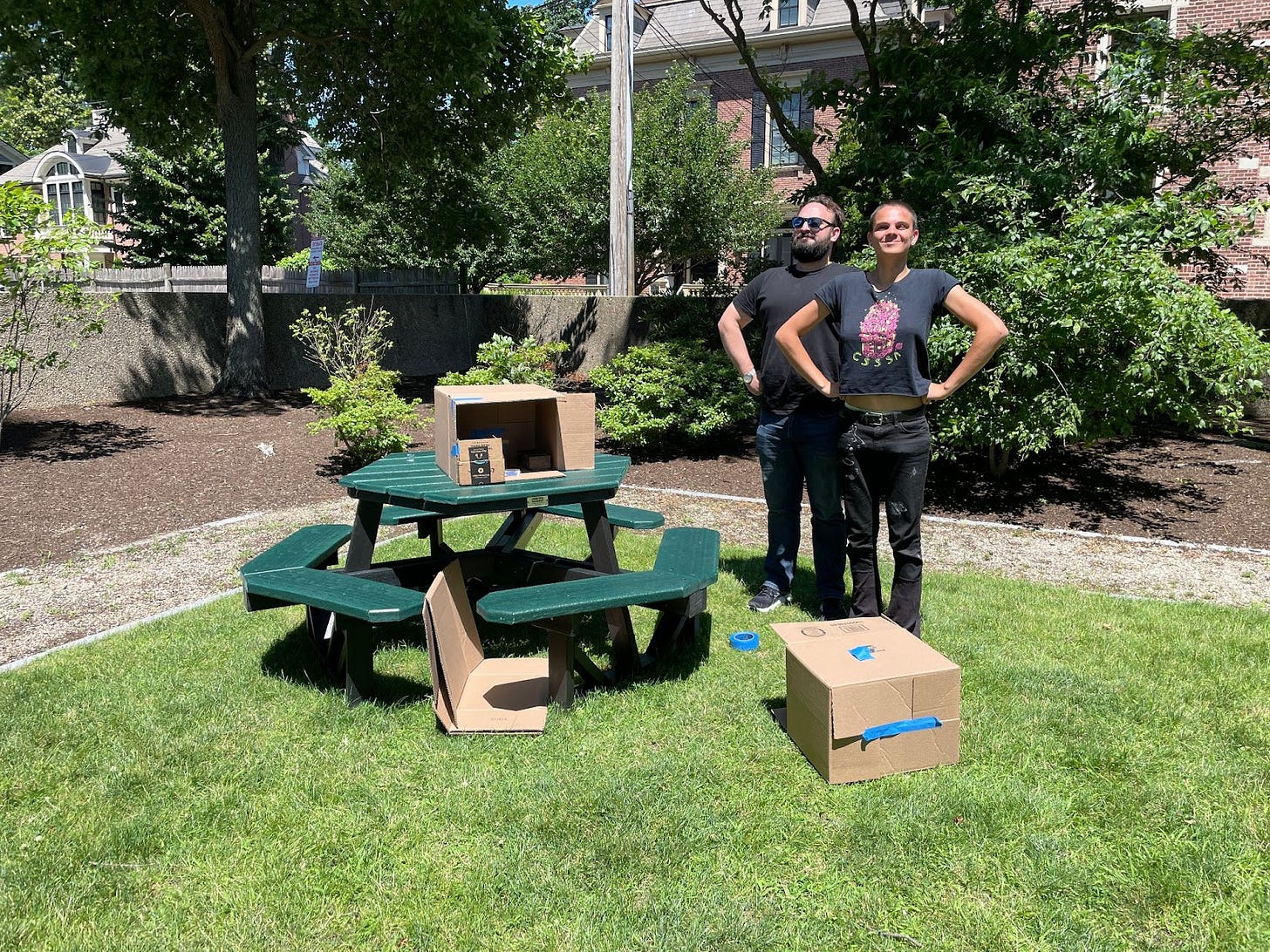

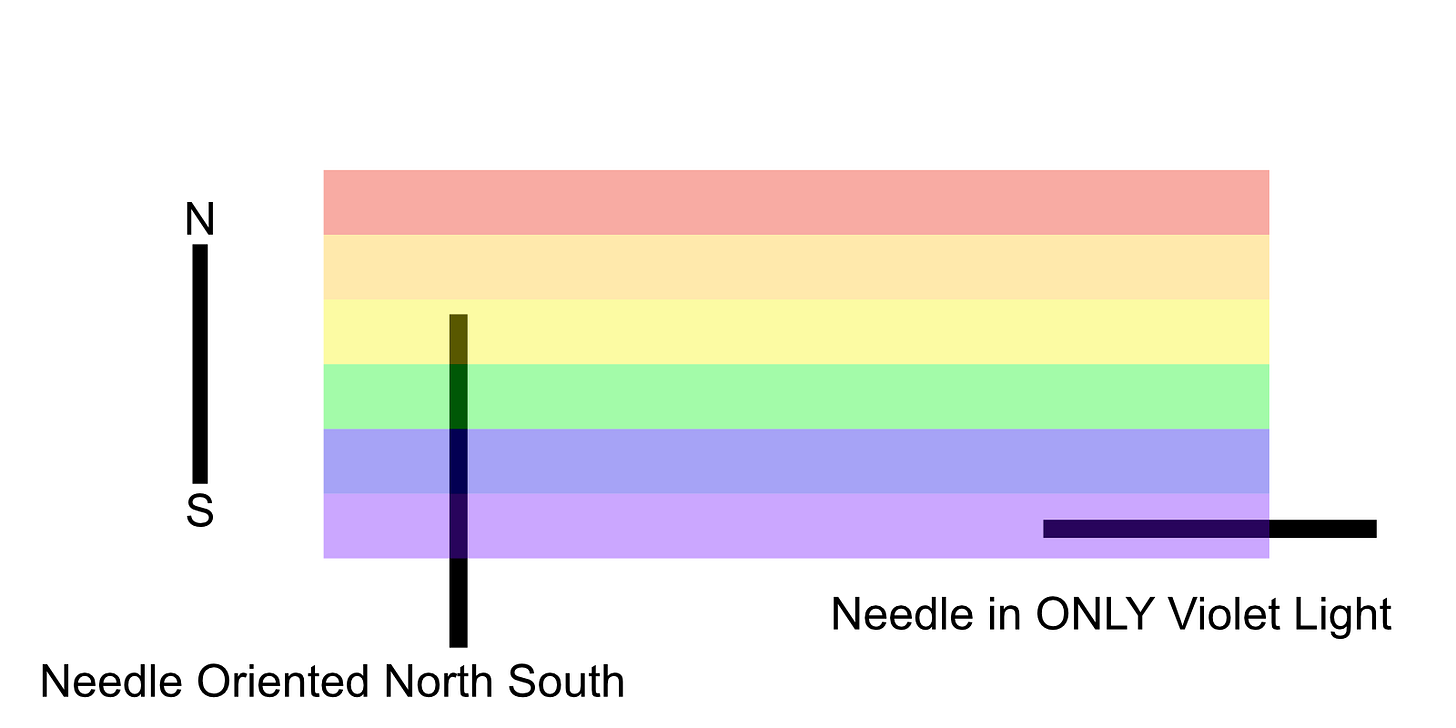
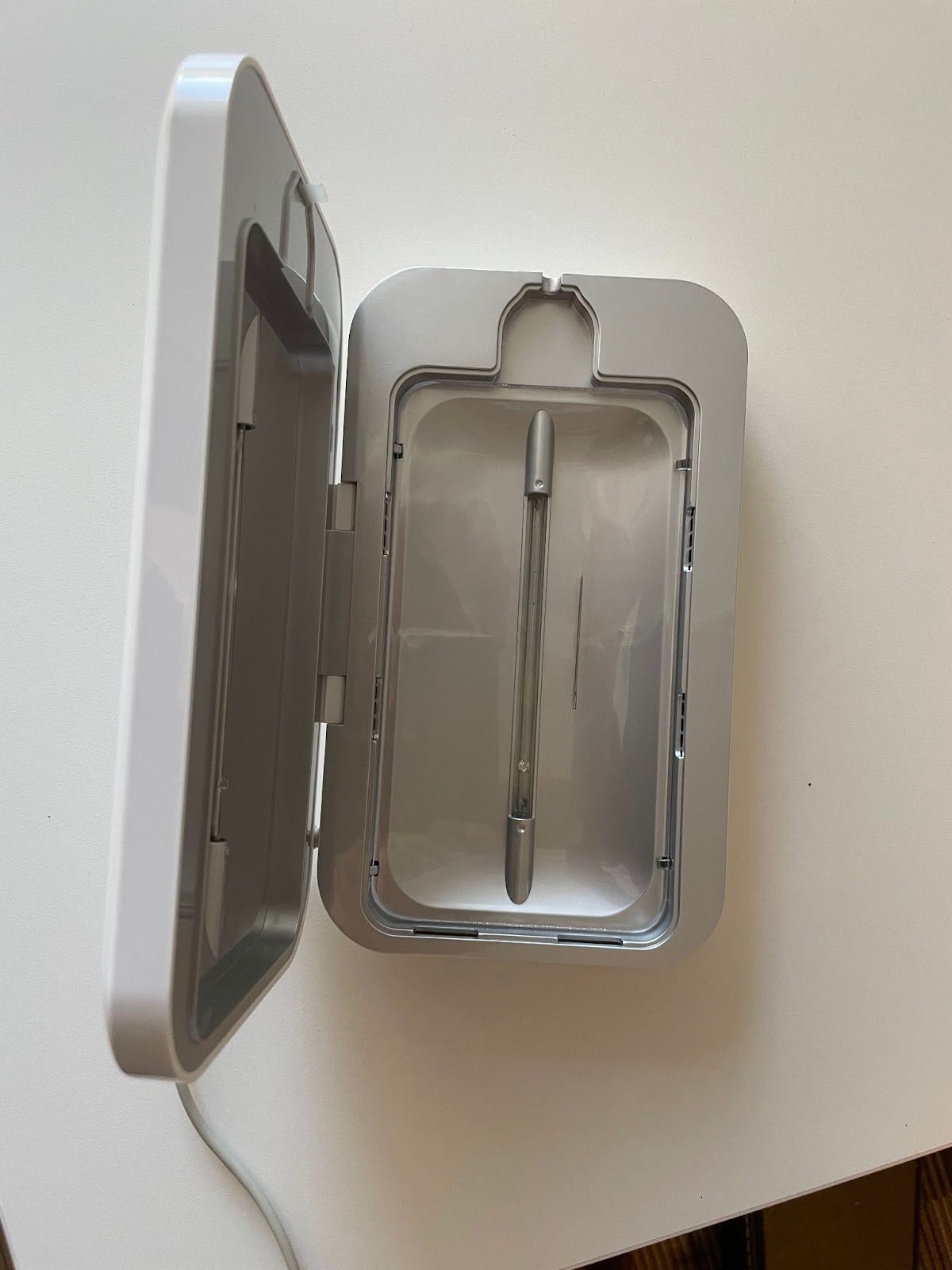

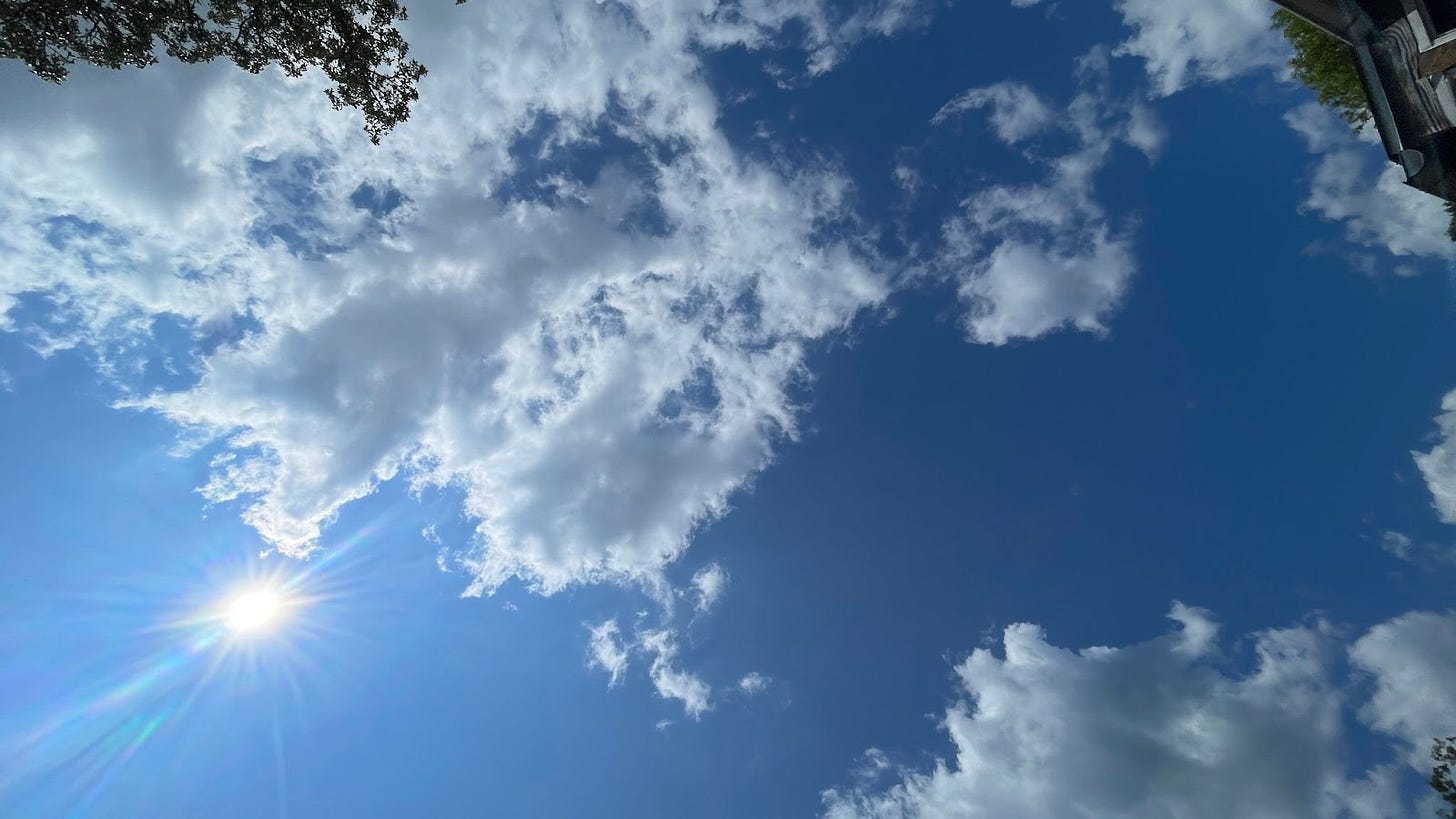
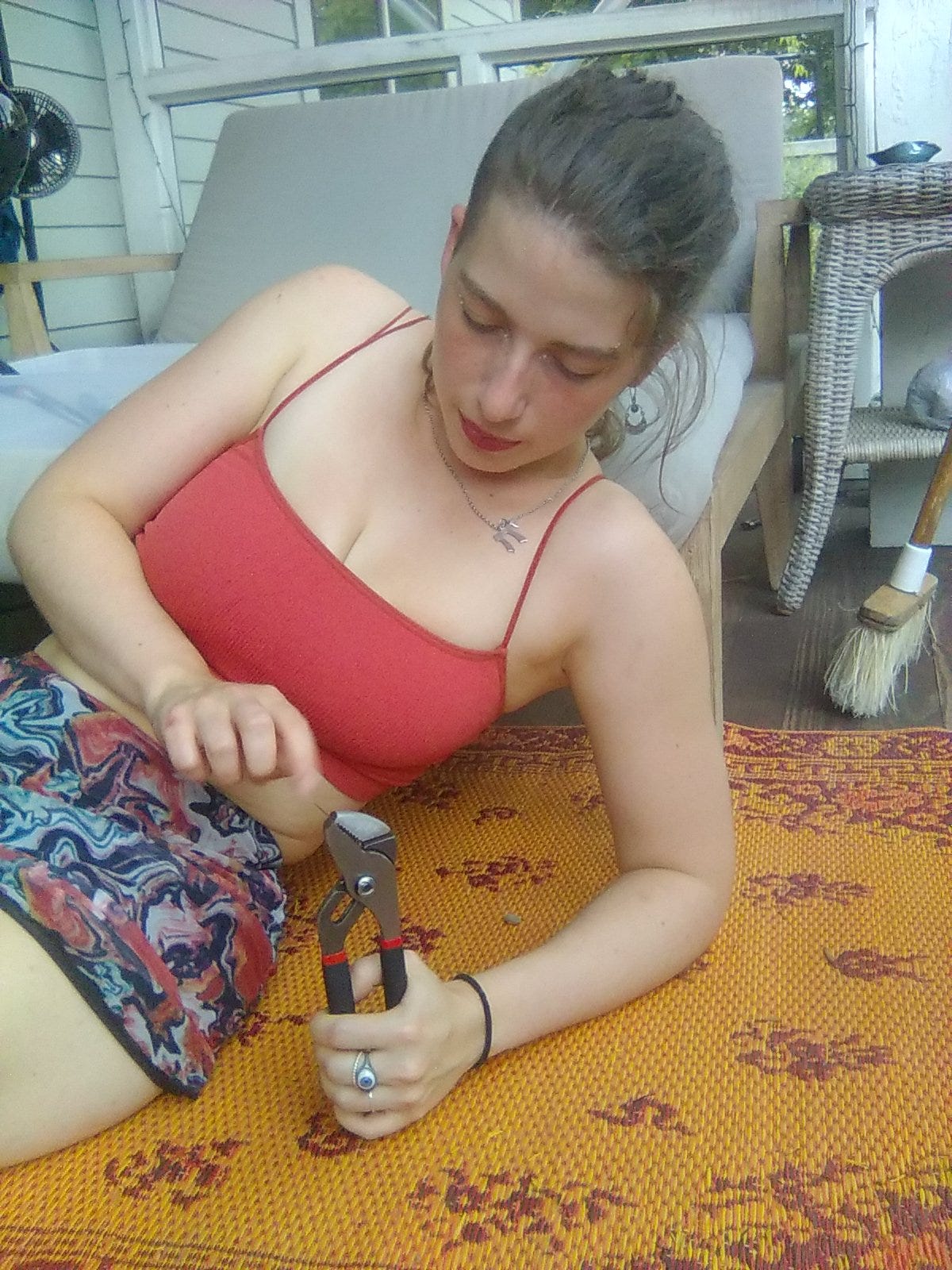
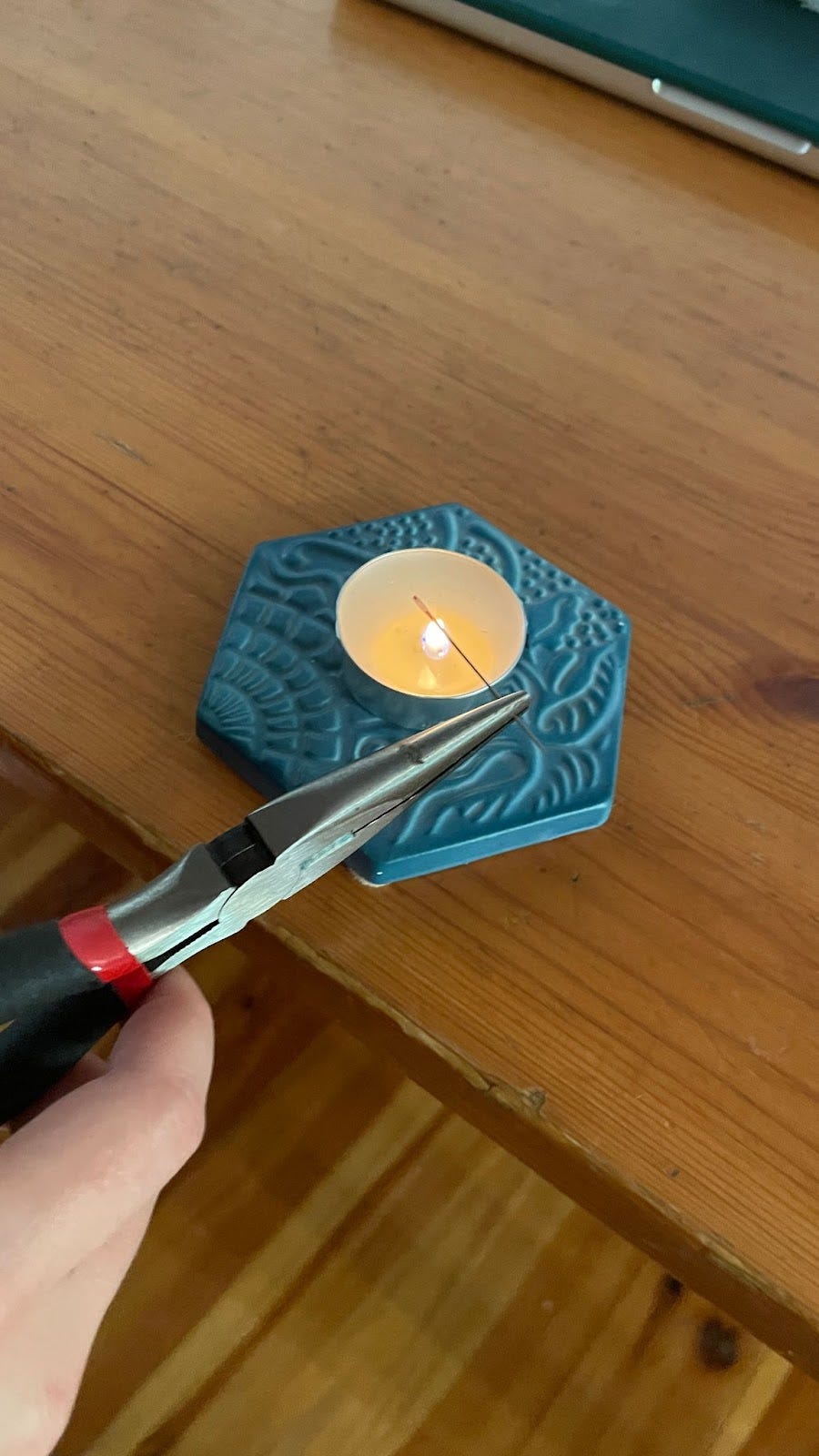
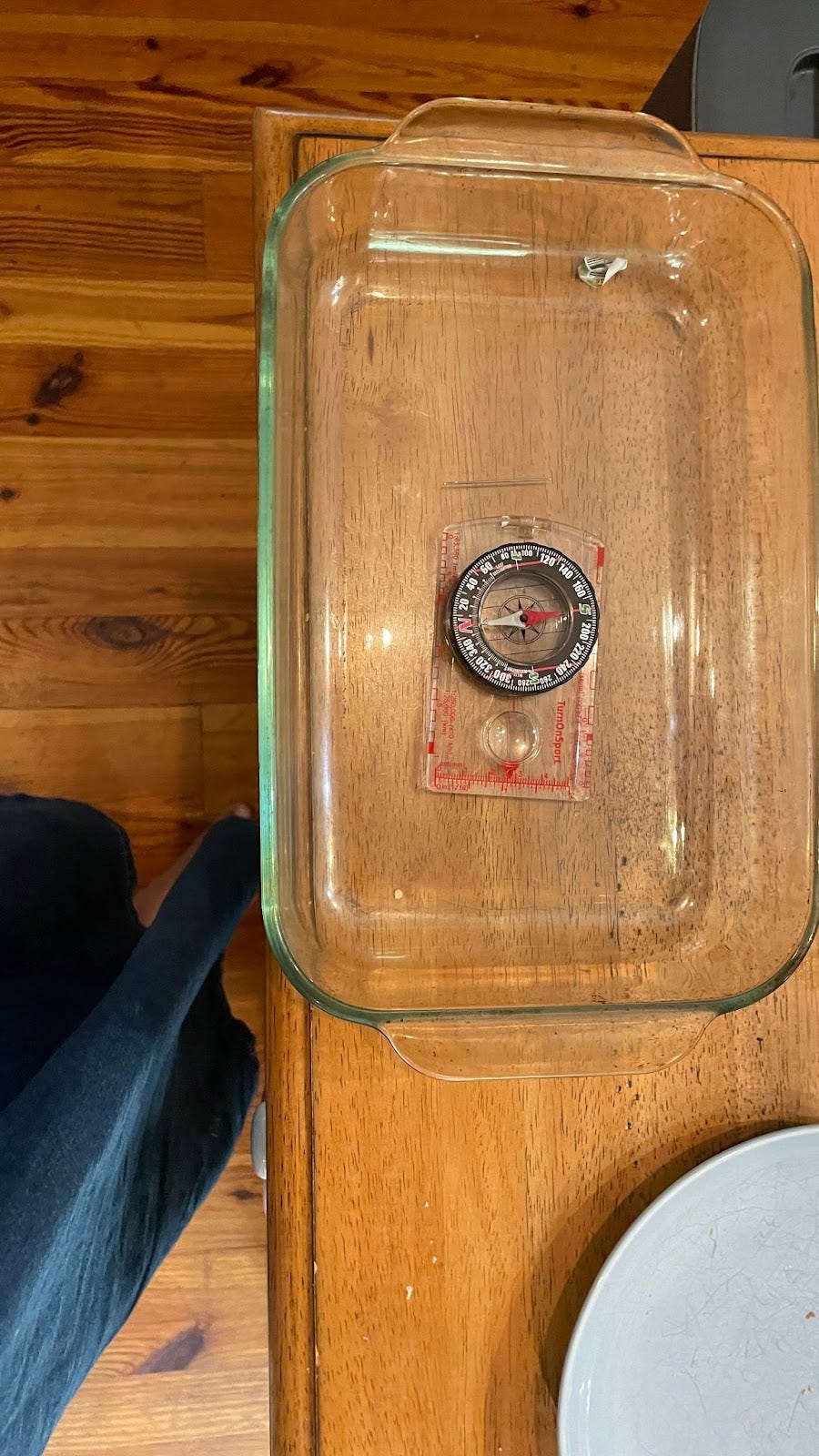
Oh my, well first you are working with ferromagnetism. Which theoretically is the weirdest type of QM and Thermodynamics and magnetism. And you should totally read about what everyone else has done.
Using the Earth's B field to do anything is fraught with danger, cause if a car drives nearby the local B field can change in all directions*. (The Earth's field is kinda weak on some scales.)
*at some point in my past life I was testing Rubidium optical pumping apparatus in the basement of my bosses house. Cars pulling in the driveway.. right next to my basement location, would totally flip the local B-field around. (Get a stronger magnet!)